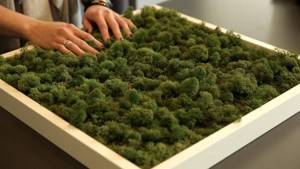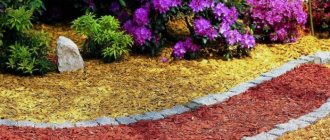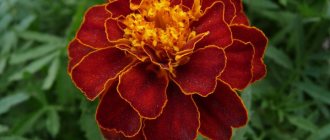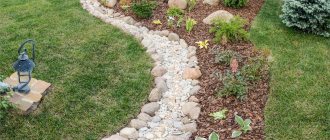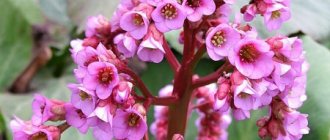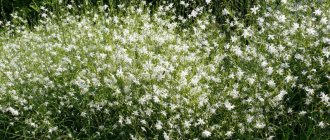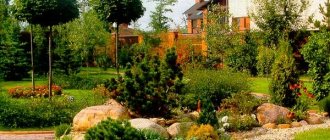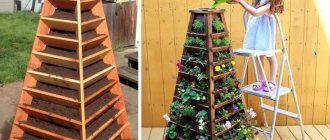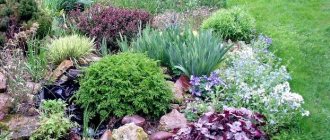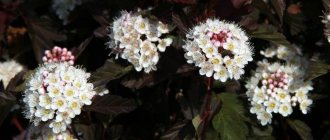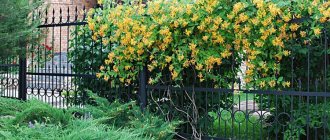A little bit of history
The idea of using living vegetation in interior design first came to Norwegian artists.
They own a living installation, which was the subject of an exhibition ten years ago, in which reindeer moss adorned the wall above the bed.
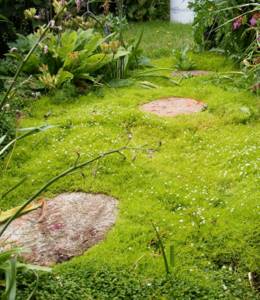
This caused a real sensation, after which the use of floral elements in the design of premises became a truly fashionable trend. However, moss on the wall is actively used today to decorate gardens.
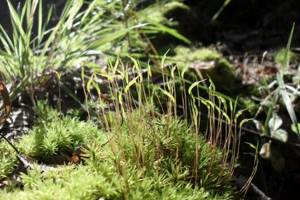
Application options
Moss in the interior of an apartment can look completely different, but the main use case was, is and remains a wall made of moss. Large surfaces covered with moss look incredibly stylish, refresh any interior, and create a feeling of closeness to nature.
Phytowalls can be different: they occupy space from corner to corner, and are decorated only with individual vertical or horizontal stripes, protrusions, niches, columns.
Walls usually play an accent role, highlighting certain areas in the room.
The second most popular method of application in the interior is paintings made of moss. Solutions can be wall panels with a textured surface, framed paintings, wooden panels of unusual shapes, complemented with decorative moss.
In addition to the classic shapes: square, rectangle, circle, wall decor can be made in the form of an animal, inscription, star, heart, tree, flower.
Advice! Decorative moss on the wall can also be functional: for example, if you use it to decorate a clock.
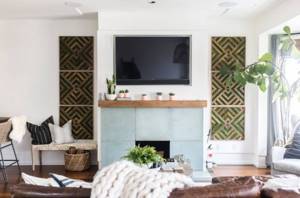
The photo shows wooden panels with greenery
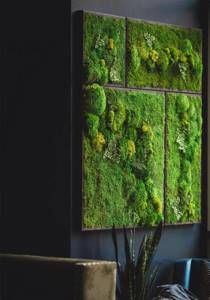
A wall made of moss is not the only option for using it in the interior. If you are looking for an unusual mobile decoration, take a closer look at compositions in flowerpots, glass florariums, and vases.
On the table you can place a “lying” flat panel with a scene you like: for example, in the form of a fairy-tale forest or a beautiful clearing.
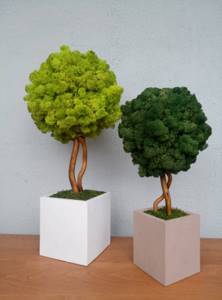
You can also decorate furniture with stabilized moss: unusual inserts in a shelving unit or a green “river” in the tabletop will turn ordinary home furnishings into original ones. Living moss is also used to make bathroom rugs.
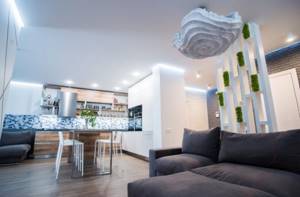
In the photo there are green inserts in the zoning partition
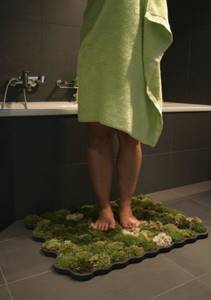
Advantages of moss decor
Using this plant in home dungeons is an excellent option for anyone interested in a healthy atmosphere.
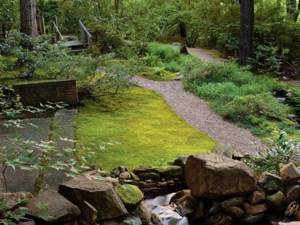
So, the advantages of the phyto-wall and its elements include the following:
- There is no need to use heavy structures to support the moss or soil;
- Tolerates lack of sunlight well;
- It is an excellent sound insulator;
- Regulates the level of air humidity in the room;
- There is no need for fertilizer or watering;
- It is possible to decorate moss with other indoor plants;
- You can create all kinds of patterns/drawings/abstractions, etc. from moss slabs.
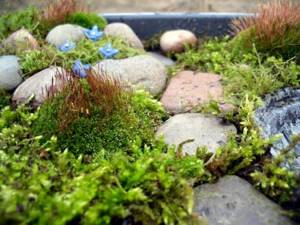
Such decorative elements do not require the care that is required for ordinary plants, which only adds a plus to the properties of moss. You can choose a separate type of home decoration.
Moss in the office or home
It should be remembered that at home the humidity in rooms is always slightly higher than in offices. Therefore, in office premises it is necessary to take care of increasing the moisture content in the air using special devices and using various moisturizers more often.
Living moss panel
To create something like this, you will need stabilized moss (canned). The principle is that the plant is covered with special mixtures that will prevent it from rotting and prevent pathogenic microbes from multiplying.
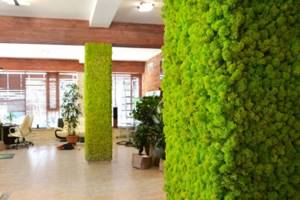
If there are reasons for this and the desire of the buyer, then it may have additional properties: moisture resistance, fire resistance, and so on, not to mention the parameters.
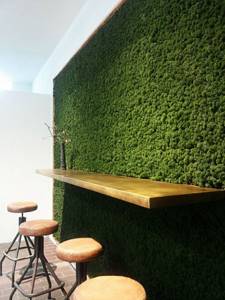
The production of such things is possible thanks to reindeer moss (moss), which is processed in the process, turning into a bright and very elastic canvas. It is absolutely harmless to humans and animals, acceptable for people with allergies, but can cause food poisoning.

During processing, the material is subjected to special solutions that cannot be eaten. This is one reason why children and animals should be kept away from a living wall.
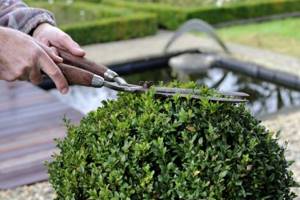
Evergreens - a complete list with descriptions and recommendations from a gardener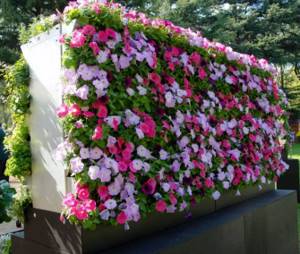
Vertical gardening - from idea to implementation, choosing options according to budget and attractiveness (photo + video)
- Vertical flower beds - basic principles and rules for choosing plants and arranging a suburban area with your own hands
Features of use in design
Initially, living walls or decor were made from natural forest lichens: but this option was quickly abandoned because
moss in apartments required too much care - from maintaining high humidity to constant watering and spraying. To simplify the task, the plants began to stabilize. Stabilized moss is a natural material that has undergone a “preservation” process, allowing it to retain its original appearance and softness for a long time. To create interior decor from living moss, natural plants of various types are collected. The standard raw material is Cladonia, a lichen widespread in forests, tropics, and deserts. After assembly, stabilization is carried out: moss is soaked in a saline solution, and dye is added if necessary.
Advantages:
Caring for a living wall and its rules
There are no special points for caring for a living wall. The most important thing is to monitor the air humidity; if the air is dry, you will need to periodically spray the moss from a spray bottle.
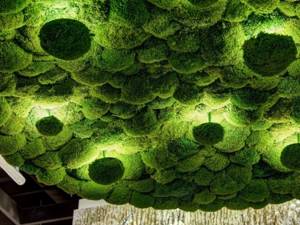
The classic version of the moss wall panel ranges from 10-50 mm. The exact parameters depend on the manufacturer himself and those properties that were taken as a basis during the production process and its purpose.
Fastening to the wall surface occurs using liquid nails and self-tapping screws. Photos of decorative moss are presented in a wide range. There is no provision for leveling the walls; the most important thing is that the surface is dry and clean.
How to care?
The care process depends on the type of moss.
- Live moss. At first, a growing green garden is watered daily: when the plant takes root, watering is reduced to once every 3-4 days, but sprayed every day. It should be placed in a shaded place with high humidity - it is better to place a humidifier or a vessel with water (for example, an aquarium) nearby.
- Artificial. Any non-living plants are dust collectors, so from time to time the decorations will have to be vacuumed or washed with a damp sponge.
- Stabilized. Keep away from ultraviolet radiation, frosty air, and water. Dust is removed with cold blowing - from a hairdryer or vacuum cleaner with reverse draft.
Moss like art
Using the gifts of nature, you can create real pictures and find other compositional solutions. This eco-style design option looks very stylish and impressive.
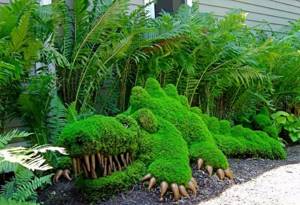
If the choice is made of moss paintings, then this will be an excellent alternative to a living wall. Regarding the country where such art appeared for the first time, it was Japan.

- Decorative grass - 140 photos of original design. Review of the best varieties of grass for the garden, instructions, reviews, videos + gardener recommendations
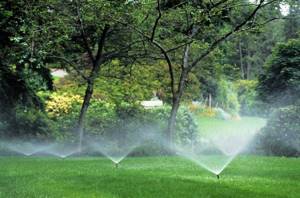
Watering the site - types and types of systems, main differences and features, rules for selection and installation, as well as recommendations for operation

Ornamental plants - 140 photo options. Review of the most popular plants with names and descriptions. Gardener's recommendations + reviews
Residents have learned to grow the very best, real living paintings, which are subsequently sold to locals and tourists.
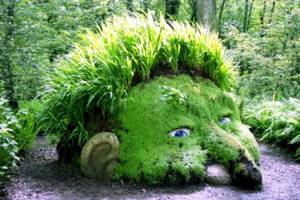
Is it possible to grow moss with your own hands?
You can almost always find an easier way by simply buying a finished product and being content with that. Or you can avoid spending several thousand American “cabbage” and make moss with your own hands.
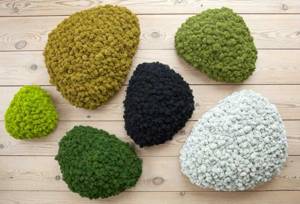
If you like more extravagant ideas for your home, you can use natural dyes. Lovers of expression will have something to work on here, because combining details will allow you to create new masterpieces.
A good solution would be a composition of branches, fir cones and other natural “accessories” that can be used to complement the moss. Here everything depends on the imagination of the master.

Making artificial moss
It is not at all necessary to spend huge sums of money on forest moss or dig for it, dragging huge boxes of the plant along with the soil.
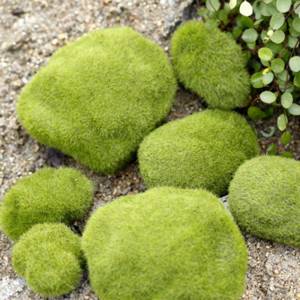
You can save money by arming yourself with all the necessary materials and tools that will help you “grow” artificial moss, which is not much different from natural one.
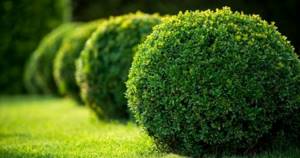
Boxwood: planting, care, growing in open ground, propagation. Full description of the plant from A to Z. More than 100 photos of evergreen shrubs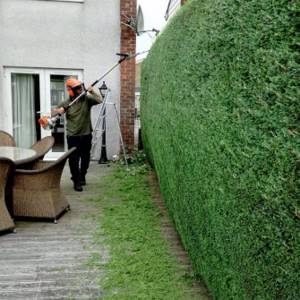
Living fence - the best ideas on what to make a hedge from at your summer cottage. Many photos of ready-made options with exclusive designs + instructions
- Trimming bushes - the basics of choosing the right plants and forming the right shapes, selecting tools (photo + video)
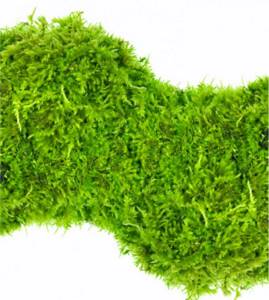
And for this we need:
- The rough part is from a washcloth (green, of course);
- Paints (also green);
- Glue;
- A few toothpicks.
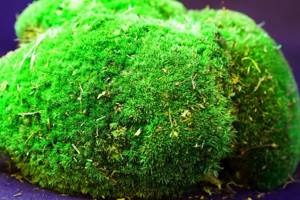
By following manufacturing techniques, you can create a natural-looking product that retains its appearance for a long time.
Moss outside the garden
This ornamental plant can be used not only in the garden. Decorative stabilized moss is a natural material that has been specially suspended in development. It is used for decorating rooms.
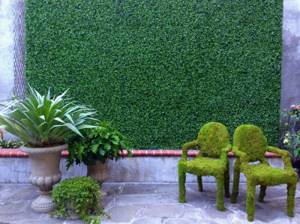
Algorithm for creating artificial moss
The hard part from an ordinary sponge is crushed and mixed with acrylic paint; this is why we need toothpicks. Mix everything very thoroughly.
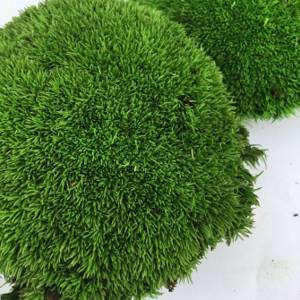
The next step is to mix the resulting mass with glue. If the glue dries quickly, then it is better to apply it directly to the coating, and only then lay out the moss.
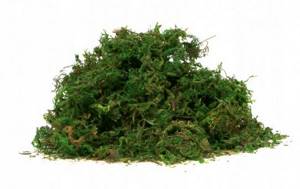
If the selected glue takes several hours to dry, you can also soak it together with a finely chopped sponge.
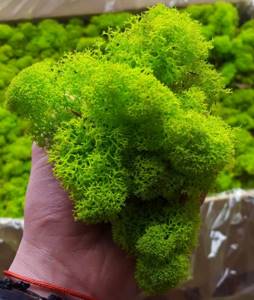
Such a scheme will allow you to create many original interior items, including accessories in an exclusively eco-style.
But in the case when decorative moss is needed for the garden, it is better to purchase ready-made moss in a store or go on a fruitful walk in the forest.
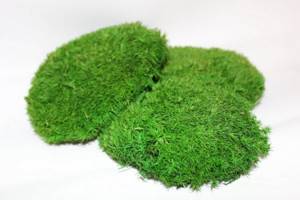
Moss in interior design
There are a huge number of options for decorating the interior with moss. Along with the living wall, it is worth highlighting other, no less popular ideas, which we will discuss further:
- Furniture or its individual parts;
- Greenboards;
- Silhouettes and inscriptions;
- Photo frame;
- Rugs.
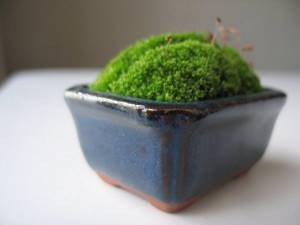
According to Feng Shui, the more living plants there are in a house, the more it contributes to the development of a healthy atmosphere. Of course, if everything is done according to the canons of the Eastern tradition.
What does it look like in the interior of the rooms?
Moss is popular in different rooms, but in each it has its own tasks.
Kitchen
Moss in the kitchen interior is a beautiful accent that allows you to highlight the dining area or decorate the work area. If you decide to make a kitchen apron out of lichen, the plant must be protected with glass directly above the sink and in the area of the stove. Or don't use it at all.
Advice! Do not place phytowalls or panels near radiators - high temperatures combined with dry air are detrimental to living greenery.
Living room
Moss in the living room interior decorates one of two surfaces:
- wall behind the sofa;
- TV area opposite the sofa.
Decorative moss
Forest moss is often used as a decoration element. Considering its not entirely natural habitat, it should be taken together with the soil. Only in this case can one count on a positive outcome of such an enterprise in a residential building.
This design option will perfectly complement such elements as:
- Vases, flower pots;
- Flower pots;
- For decorating various glassware, trays and more.
Natural moss can be attached to the surface using regular PVA glue. Such moss crafts will find their application both in the house itself and in the garden or greenhouse.
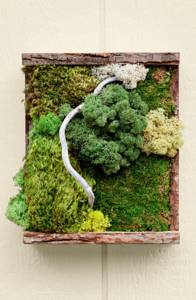
Recommendations for cultivation
When creating a moss covering, it is necessary to use a nutrient mixture containing plant spores. To prepare the mixture you will need:
- kefir, natural yogurt, milk, buttermilk (optional) - 2 cups. Dairy products act as a nutrient medium;
- moss (fresh or dry) - 1.5 cups.
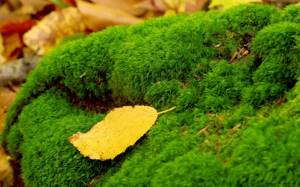
The plant and dairy product are mixed in a blender to a homogeneous mass, the consistency of thick sour cream. If necessary, the mixture is diluted with water, and moss is added for greater density. If the surface on which the spores will be applied is smooth, then wet clay is added to the composition to make ceramics. The clay will increase the viscosity, which will allow the spores to take hold. The result of the work will be visible in a month and a half: that’s how long it takes plant spores to germinate.
Features of cultivation:
- moss can be purchased at specialized flower shops;
- When collecting plants in nature, you should consider where you plan to plant them. For the lawn, moss is taken that spreads along the ground. Plants living on trees are suitable for covering garden forms and graffiti;
- The moss will retain the rich color of the thallus and develop rapidly with sufficient moisture and light. The plant needs soft morning and evening sunlight. On a hot afternoon, mosses feel comfortable in the shade of trees;
- the best planting season is autumn;
- A mossy lawn must be cleared of fallen leaves.
Growing moss does not cause much trouble and does not require special financial investments. Green rugs will add brightness to the garden and garden plot both in spring and summer, and in the depressing days of late autumn.
Furniture+moss
When you already have enough wall panels and paintings, and you want to add something special to the interior, it’s time to take a closer look at furniture with moss.
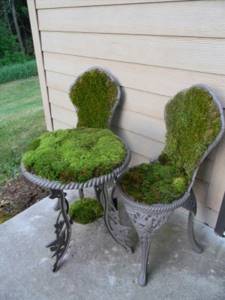
It is not at all necessary to bring the piece of furniture to a state where it is covered with mold or cobwebs and a thick layer of dust; it is enough to simply pay attention to the furniture with elements of living moss.
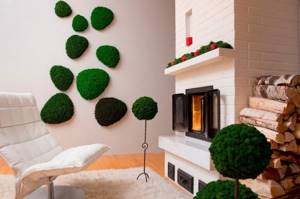
For example, a glass tabletop with flora underneath. And perhaps a bedside sconce? There are a lot of options, and each of them can be brought to life.
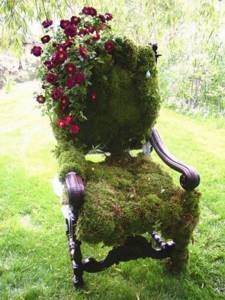
Living plantings are increasingly appearing as decorative elements in the interior of premises, be it a residential building, an office or even an institution.

The reasons for this choice are enough for people to increasingly abandon other ways of decorating their space.
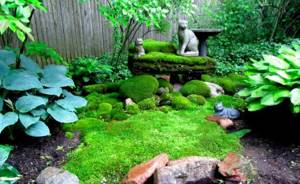
Where can you find moss
It is not at all necessary to do all the dirty work yourself, at least when it comes to searching for forest moss.
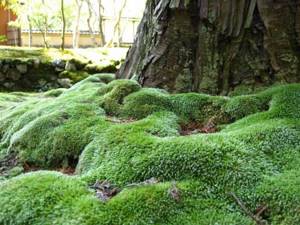
An alternative would be to visit a specialized store and further purchase everything you need. However, there is another option - to do it yourself.
